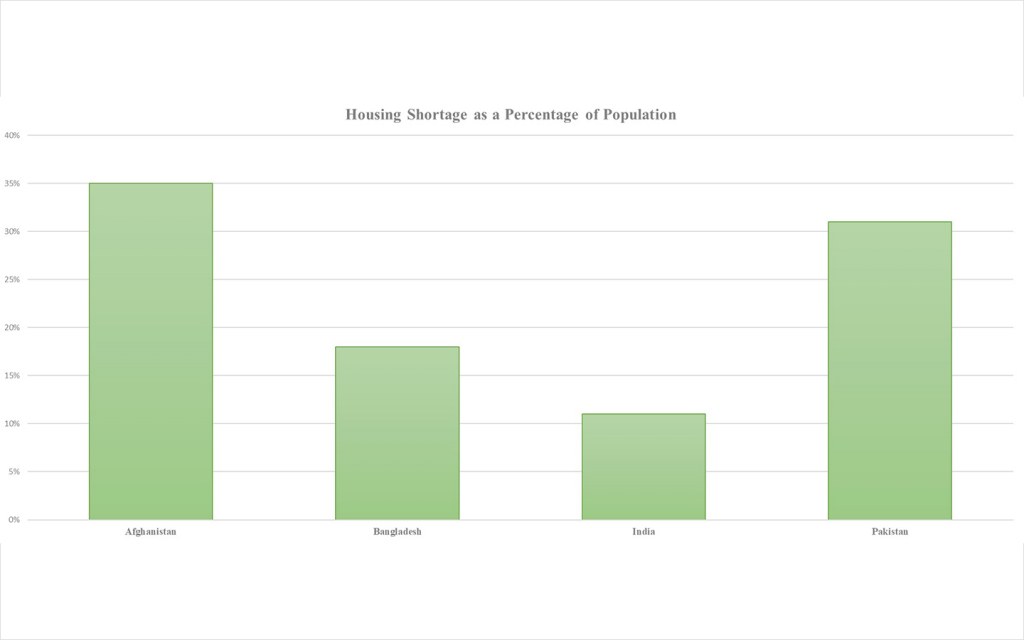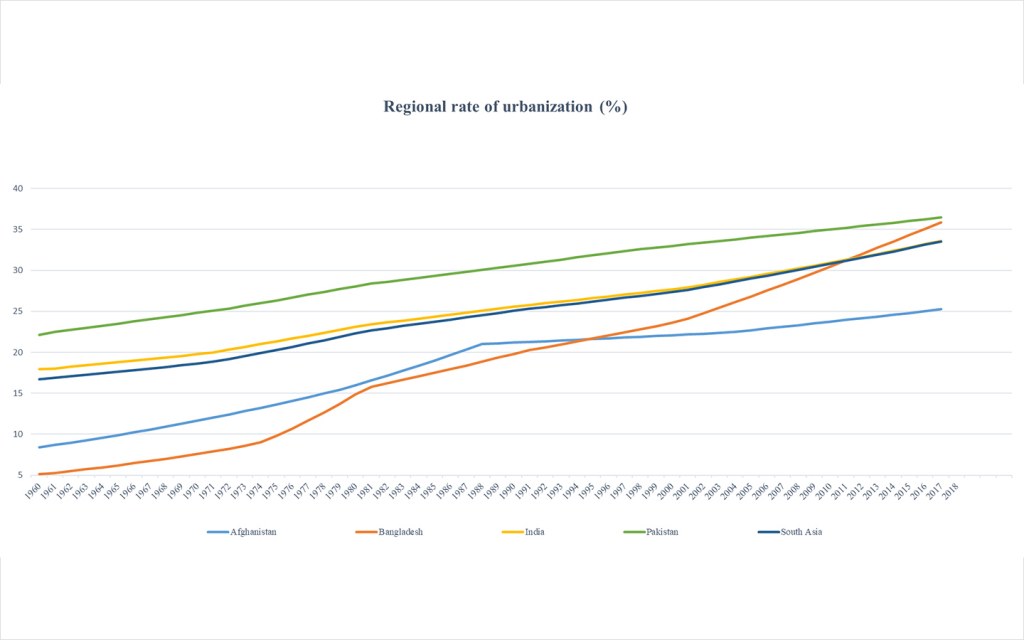Home » Laws & Taxes » Housing Shortage in Pakistan: Crisis or an Opportunity?
Although Pakistan has had numerous successful ventures of large and mid-scale housing projects led by the private sector, as well as occasional successes in the public and public-private housing schemes, there exists a stark gap between the demand and supply of housing that requires significant policy interventions.
As the seventh most populist country in the world, with a fast-growing population (2.4%), and an even faster growth in urban population (3%), Pakistan is staring down the barrel of a gun that has gone off.
Research estimates suggest that the current housing shortage is around 10 million, (expected to grow to 13 million by 2025) out of which nearly half is in the urban areas. As a share of the population, this scarcity is one of the highest in comparison to other South Asian countries.

Source: Enhancing Builder Finance in Pakistan, Karandaaz Pakistan
Moreover, according to the State Bank of Pakistan, the urban housing demand is going up by 350,000 units every year, of which the demand is met for only 150,000 units. Of this, more than 60 percent of the housing demand is coming from the low-income groups, while the supply is predominantly in the middle to upper middle-income groups. Therefore, there is an even greater mismatch in the provision of low-income housing.
Additionally, with a rising younger population, and higher internal rural to urban migrants searching for jobs in big cities, many have no choice but to choose informal means of living. Therefore, unsurprisingly, about 47 percent of the current urban population lives in informal settlements, which are in the form of katchi abadis mostly built on parcels of government occupied land.

Data source: World Bank
These squatter settlements also do not have access to infrastructure and basic public goods such as water, gas and electricity. All this is further exacerbated by the fact that low-income households require larger units to accommodate, but are usually in very small sizes.
However, optimistically speaking, the housing shortage can also be looked at through the lens of opportunity. According to a 2014 Mckinsey study, the global gap of 440 million housing units represents an opportunity for the private sector. The investment required to meet this gap is $9 to $11 trillion for construction, and up to $16 trillion if one includes land cost. At this rate, Pakistan’s current shortage would need an investment of $250 billion, higher than the estimates of $180-200 billion suggested by local developers.
The demand-supply equation of housing is a tough one to balance. It is clear that while the government must actively provide solutions, in terms of infrastructure and urban planning, massive land reforms, policy instruments and incentives for mixed use developments, as well as removing regulatory barriers; it is the private sector—builders, developers, construction solution providers, banks, leasing and financing companies—that will have to mobilize their resources. The success of the Naya Pakistan Housing Plan could create an impetus for this. More on that in this space later.
For more analysis and information on housing initiatives, please read our research on affordable housing in Pakistan.



